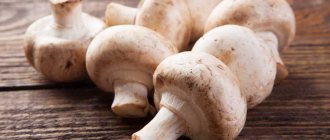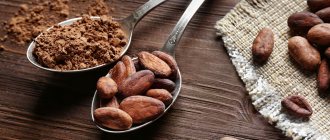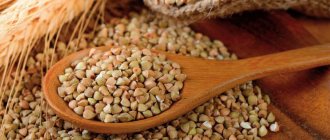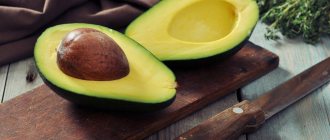Benefits of mushrooms
Due to possible problems with absorption, many adults classify mushrooms as a useless food that should not be offered to children at all. However, quality mushrooms have quite high nutritional value. They provide the human body with vegetable proteins, fiber, vitamins C, PP, D, A, group B, calcium, easily digestible fats, potassium, phosphorus and many other compounds. In addition, champignons are a source of enzymes and organic acids.
It should be noted that most of the beneficial substances in mushrooms are concentrated in their caps, and chitin, which is harmful to the child’s body, is more present in the legs. For this reason, only mushroom caps are suitable for baby food.
Are mushrooms good for children?
And we’ll start, perhaps, with myth No. 1: mushrooms are a useless product for children. Which is not true at all. High-quality mushrooms have the same nutritional value for both adults and children.
If we consider each element included in their composition, doubts will disappear: mushrooms are healthy!
Nutritional value of some types of mushrooms per 100 g of product
- Protein substances. There is as much protein in a kilogram of mushrooms as in 100 grams of meat. However, it is poorly absorbed due to fiber, which is their basis. Therefore, when including mushrooms in a child’s menu, they should be cut into small pieces and the child should be taught to thoroughly chew any food he consumes.
- Carbohydrates. There are, but, again, mushroom fiber is practically not digested.
- Fats. Champignons, porcini mushrooms, and saffron milk caps are rich in them (they are easily digestible, including by children).
- Sugary substances. It has a pleasant, sweetish taste.
- Resinous substances. They are found in mushrooms, milk mushrooms, and saffron milk caps and make their taste sharper. It is not recommended to introduce your child to mushrooms with these particular varieties.
- Minerals . For example, such as phosphorus and potassium are contained in mushrooms in greater quantities than in some fruits and vegetables.
- Essential oils . They add a unique scent to these forest gifts of nature.
- Vitamins. A, B, C, D, PP, which are important for the body, are also found in mushrooms. And there are even more B vitamins than in cereals.
- Organic acids. Stearic, acetic, lactic, oil, oleic. They strengthen the immune system and fight infections.
- Enzymes. Champignons are especially rich in them. Accelerate the breakdown of proteins, fats, carbohydrates.
Champignon
The name comes from the French word champignon, which means “mushroom”. The cap of the mushroom is massive, with dense flesh. Diameter - from 6 to 15 cm. Some specimens reach up to 25 cm in diameter. The color of the hat varies from white to light brown.
The skin is soft to the touch, not slippery, slightly velvety. The leg reaches 11 cm in height. At the base it has an extension and a characteristic white ring. The plates that are under the hat are light pink in young specimens, and brown in older specimens. The flesh is white, but when broken it can change color to pink. Peak ripening occurs at the end of October.
Did you know? In China and Korea, champignons are used to treat bronchitis, as well as eating disorders.
Can children have fried mushrooms?
It is better not to give fried mushrooms to children
. If you carefully read our article, you probably realized that mushrooms are a very difficult product for a child’s body that is not yet fully formed. And if you fry them, you will make them even less healthy and even harmful. What's the matter? Firstly, when frying, you will definitely have to use vegetable oil, which will significantly increase the calorie content of the finished dish. And if the baby eats a lot of it, then heaviness in the stomach and bloating will be guaranteed.
Secondly, we must remember that during the frying process, carcinogenic and toxic substances inevitably appear that can have a negative effect on the entire body of a small person. As a result, he may have problems not only with the stomach and intestines, but also with the heart and blood vessels.
And, of course, do not forget that any heat treatment reduces the amount of nutrients in products. And if you take into account that you will first boil the mushrooms and then fry them, then we can say with confidence that the very minimum amount of vitamins and minerals will remain in them.
Can children have champignons?
One of the most important factors influencing the development of a child is his nutrition, and therefore many parents try to make their child’s diet as healthy and balanced as possible. However, it is often quite difficult to determine whether a particular product is considered healthy or unhealthy food, which raises a lot of questions, for example, can children eat champignons?
In this article we will try to find out which group this type of mushroom belongs to, and whether they pose any danger to the health of the little gourmet.
Is it possible to give mushrooms to a child, and at what age?
Sometimes you really want to diversify the daily family menu and please your family with potatoes with mushrooms or aromatic mushroom soup. But what if you have a small child who will probably ask for a portion of a new interesting dish? There is a huge amount of conflicting data about whether mushrooms can be given to children. And very often parents simply cannot find a clear and unambiguous answer to this question. How to distinguish myths from objective reality here? Let's try to figure it out.
Oyster mushrooms in home cosmetology
One of the properties of oyster mushrooms is antioxidant; it can bring particular benefits to the skin of the face.
For cosmetic procedures at home, you can use fresh mushrooms. To do this, they are pre-crushed.
To benefit dry skin or during winter cold, we recommend using a nourishing mask:
- 4 small mushrooms are chopped, 1 tablespoon of sour cream and a teaspoon of green tea are added to them.
- The resulting mixture is applied to the face for 25 minutes.
- After the procedure, it is advisable to wash your face with cool water.
If your skin lacks moisture, you should stock up on olive oil and fresh cucumber.
For a useful mask you will need:
- 2 teaspoons grated cucumber,
- teaspoon olive oil,
- 2 tablespoons of mushrooms.
The mixed ingredients are applied to the skin for 15 minutes. The mask is removed with a cotton pad. Subsequently, you should wash your face with mineral water without gas.
Children's recipes
Cream soup
Ingredients:
- 500-600 g of young caps;
- bulb;
- small carrots;
- 1 potato;
- sour cream;
- greenery;
- salt.
Time: 35 minutes.
Cooking method:
- Pour 0.5 liters of water into a saucepan and place on the stove.
- Peel the vegetables, chop finely, put in boiling water.
- While the vegetables are boiling, clean the mushrooms, wash them, cut them and add them to the vegetable broth.
- Cook the soup over low heat, remembering to remove the foam.
- When the champignons are ready, remove the pan from the heat and use an immersion blender to grind its contents and add salt to taste.
- Pour into plates, add herbs and sour cream. Serve with croutons.
Children usually really like this soup. But at what age it can be given to a child, you will have to decide for yourself, based on the scattered recommendations of pediatricians mentioned above.
Can children eat sour cream or not?
Mushroom sauce
It will give your usual dish a new taste and aroma. Served with potatoes, chicken, rice.
Ingredients:
- 10 champignons;
- 2 cups mushroom broth;
- 1 tbsp. l. flour;
- 2 tbsp. l. butter;
- 1 onion;
- salt to taste.
Cooking method:
- Prepare a rich broth from 10 champignons.
- Add the fried onion to the broth and crush the pieces with an immersion blender.
- Fry the flour in a dry frying pan until golden brown. Season with salt until the sauce is lump-free.
- Stirring quickly, pour the mushroom broth into the frying pan and simmer for 10 minutes over low heat.
- Butter is added after turning off the stove.
- Greens, pepper, bay leaf will decorate the taste of this sauce, but are not required components.
Taste qualities
The pulp has a pronounced mushroom aroma. Due to their smell, they can be used to prepare various dishes, including soups and snacks.
They perfectly complement meat dishes and are suitable for making pizza. Fresh mushrooms contain only 27 kcal. Protein - 4.3 g, fat - 1 g, carbohydrates - 0.1 g.
Important! Champignons can be confused with the pale toadstool or the light-colored type of fly agaric. Wild mushrooms should not be given to children.
Can children be given porcini mushrooms, champignons, oyster mushrooms, chanterelles, and morels to eat?
Children can only be given well-heat-treated mushrooms.
As you probably already understood from what was written above, it is best to give mushrooms to children from the age of 10. As practice shows, at this age children can already eat food suitable for older people, provided that it will not be too spicy and salty. But still, in addition to the age of the child, it is also extremely important to take into account the variety of mushrooms.
After all, no matter how sad it is to admit it, all mushrooms contain different amounts of useful substances. In view of this, if you have already decided to feed your child forest meat, then give preference to the most healthy one.
So:
- The best options for children are milk mushrooms, oyster mushrooms, morels, boletus and champignons. They contain a minimal amount of heavy proteins, which means that they definitely will not overload the digestive system of a small person.
- The second position is occupied by porcini mushrooms, aspen mushrooms and boletus mushrooms. They also contain quite a lot of vitamins and microelements and, most importantly, they are very quickly absorbed by the body.
- But chanterelles, russula and saffron milk caps contain a minimal amount of useful substances. For this reason, they are best used as a flavoring agent in a sauce.
Possible harm from eating champignons by a child
So, if champignons are so healthy, then why do experts still recommend limiting their consumption?
The thing is that these wonderful mushrooms bring significant benefits only if the child eats them in small quantities, but if such a product is eaten without moderation, then the risk of various side effects increases significantly.
- The protein contained in champignons is quite difficult to digest, especially if we are talking about a child’s body. Therefore, in case of overeating, side effects such as bloating, pain, flatulence and indigestion are possible.
- There are several varieties of champignons, including forest ones. The main danger of any mushrooms is associated with them - they can easily be confused with a poisonous product. For this very reason, pediatricians strongly do not recommend giving children “wild” mushrooms. It is better to use only artificially grown mushrooms.
- Forest champignons are also dangerous because their quality directly depends on where they grow. So, if the soil has been contaminated, heavy metals are deposited in the champignons, which then enter the child’s body.
- “Home” champignons are grown in soil mixed with manure, which increases the risk of food poisoning. That is why experts advise rinsing each mushroom extremely thoroughly before adding it to the dish.
Dishes with champignons for children
Delicious mushrooms such as champignons go well with vegetables, potato or meat dishes. They can be an ingredient in vegetable casseroles, cabbage rolls, omelettes, and soups.
Many adults also love a variety of pastries with mushroom filling, but it is not recommended for children’s menus, since the combination of mushrooms and dough is quite difficult to digest. Offer children pancakes, pizza or champignon pies only from the age of 14.
Cream soup
For this dish, take one onion, one potato and one medium carrot, as well as about 500 g of champignons. The process for preparing the soup will be as follows:
- After pouring 500 ml of water into the pan, place the container on the stove and wait until it boils.
- While the water is heating, peel and chop the vegetables finely, then place them in boiling water.
- After leaving the onions, carrots and potatoes to cook, wash, peel and chop the mushrooms.
- After dipping the champignons into the vegetable broth, simmer the soup until all the ingredients are ready over low heat.
- After removing the pan from the stove, use an immersion blender to puree the soup.
- Salt the finished dish to taste, sprinkle with herbs and season with sour cream. It is delicious served with oven-dried wheat croutons.
Most children like this soup, but it should not be given to a child who has not tried champignons before. Let the baby first get acquainted with mushroom dishes in the form of sauce.
The sauce made from champignons allows you to add a new aroma and pleasant taste to the usual dishes of chicken, potatoes or rice. This recipe is suitable for children over three years old:
- Wash, peel and boil 8-12 small champignons in 500 ml of water.
- Cut one peeled onion and lightly fry in a small amount of vegetable oil, then add to the broth.
- Fry a tablespoon of flour in a dry frying pan. When it acquires a golden hue, add salt and, stirring constantly, pour hot mushroom broth into the fried flour.
- Cook the sauce for about 10 minutes, then remove from heat and add 2 tbsp to the dish. spoons of butter. If desired, you can also add chopped herbs to this mushroom sauce.
At what age should it be given?
Some doctors do not recommend giving any mushrooms to children under 10-14 years of age, but many pediatricians, including Evgeny Komarovsky, believe that champignons can be tried from the age of 2. What all doctors are unanimous about is that it is unacceptable to offer champignons to a one-year-old child.
A child who is 2 years old can be given mushrooms that are grown industrially. At first, they are included in the children's menu in small quantities, for example, as part of a sauce or by adding a few mushrooms to the main dish. Over time, you can prepare peeled and well-cooked pieces of mushrooms for your child. In this case, the frequency of consumption of dishes with champignons for a child under 5 years old (for example, 4 years old) is limited to once a week.
Many doctors recommend delaying exposure to any mushrooms, including champignons, until the age of 7-10 years. They associate this recommendation with the fact that school-age children have a fully developed digestive system, so there will be no problems with digesting mushroom dishes. If a child has any problems with the gastrointestinal tract, introducing mushrooms into his diet before the age of 10 is extremely undesirable.
Attention to the child's age
Of course, as mentioned above, the main point is the age of the child. Almost all doctors agree on whether a one-year-old child can have champignons. And they categorically declare: no, it’s impossible. Even edible mushrooms that are safe for adults can cause severe poisoning and disruption of the child’s body. After all, the protective mechanism in it is not yet fully operational, which will not allow it to cope with all harmful substances. But even champignons grown artificially and not contaminated with heavy metals and toxic compounds are dangerous for babies due to the chitin they contain. The child’s digestive system will not be able to digest it. It can also provoke an allergic reaction in the body. Therefore, you can start feeding children mushrooms only from 2 to 3 years old. And firmly understand that champignons cannot be given to a one-year-old child in any form.
And for an older child, you also need to take some points into account. Mushrooms are a fairly heavy product, so it is important what to cook from them so as not to harm the fragile body. It’s a good idea to make puree soup from champignon caps. The legs should be removed, as they contain a large amount of chitin. In this case, the mushroom broth should be of low concentration. And you can give it to your child in very small quantities. And canned mushrooms – salted or pickled – should absolutely not be given to children. By the way, they are not particularly useful for adults either. It is also not recommended to give fried mushrooms to babies. They should be included in the child’s menu no more than once or twice a week and in moderation: only 10-15% of the total food.
In addition, the child’s health status must be taken into account. If he has any diseases of the digestive system, then the inclusion of champignon mushrooms in the diet of children should begin no earlier than he reaches 10 years of age. And in the case of a serious health disorder, you may have to completely protect your child from eating mushrooms, including champignons, which are considered safe. However, this issue should be decided by a doctor.
Video: Doctor Komarovsky about whether small children can be given champignons
Mushroom poisoning
Experts warn adults about the danger that lurks if a child is poisoned by a mushroom dish. Moreover, you can be poisoned even by such harmless species as chanterelles, for example, if the cooking technology is violated or if there is a large amount of them in the dish.
Mushroom poisoning is dangerous for the life and health of a small child
Attention! The greatest danger arises in a situation where, due to an oversight by adults, a child tries poisonous mushrooms.
Parents must understand that no processing of an unsuitable product (soaking, heat treatment, pickling, drying) can remove toxic substances that are dangerous to health and life. Doctors warn that if, seven or more hours after eating mushrooms, a child develops dizziness, convulsions, diarrhea, cold sweat, or increased abdominal pain, then poisoning has occurred. You need to immediately call an ambulance or go to the hospital with your baby.
Symptoms of mushroom poisoning
Experts explain that mushroom poisoning can go through several stages. For example, if a baby tries a small piece, then poisoning is not critical. In this case, lethargy, mild abdominal pain, dizziness, and nausea are observed. Symptoms of moderate poisoning are aggravated by profuse salivation, constriction of the pupils, and severe pain in the abdomen.
It is important for adults to know the symptoms that characterize severe mushroom poisoning:
- Confusion appears;
- Characteristic yellowing of the skin;
- Painful vomiting does not stop;
- Weakness and headache appear;
- Noticeable increase in pressure.
What to do in case of poisoning
If a child has been poisoned by mushrooms, the main thing for parents is not to panic, but to act competently and decisively:
- First of all, you need to call an ambulance, and while it arrives, help the baby yourself. First of all, rinse the stomach with plenty of cold boiled water. After your baby drinks the water, you need to press on the root of the tongue with a clean finger or the tip of a spoon to induce vomiting. After vomiting, you can give activated charcoal to drink at the rate of one tablet per 10 kg of baby’s weight.
- While waiting for an ambulance, the child is well wrapped in a blanket and covered with heating pads. High temperature has a detrimental effect on helvelic acid, the presence of which in mushrooms provokes severe intoxication of the body. Simultaneously with these procedures, the patient can be offered sweet tea and given a cleansing enema. Such activities must be carried out before the ambulance arrives in order to alleviate the child’s suffering.
Why are mushrooms harmful?
One of the reasons why you should not give your child champignons is that the mushrooms can be confused and become poisonous (for example, false champignons, a description of which can be found in this article). And while an adult can experience poisoning in a milder form, for a child mushroom poisoning can result in delirium, hallucinations and severe abdominal pain. In this case, it is enough to be careful when collecting and not to buy mushrooms from uncertified sellers.
Children from 4-5 years old can only be given champignons that were purchased and grown on special plantations. The fact is that mushrooms in forests and fields absorb toxins from the soil and air (especially if the area is located near a city or highway). These toxins can become dangerous for a child’s weak digestive system, while an adult’s gastrointestinal tract will digest them and not even notice a large accumulation of toxins (although even in some adults, the stomach and intestines sometimes cannot cope).
But still, the main reason why mushrooms are allowed from the fourth year of life is chitin, which is found in mushrooms. It is not a poisonous substance in itself, but it is difficult for the human digestive system to digest, even for an adult. The gastrointestinal tract of a small child simply cannot cope with this task, as a result the following symptoms can be observed: constipation / diarrhea, abdominal pain, maybe nausea - which will last for several hours.
Contraindications
Contraindications include individual intolerance to the product . It is also not recommended to eat them for children under three years of age. For a child's body, digesting this product may cause difficulties, and they will not be absorbed normally. It is also not recommended for people with liver or kidney problems.
Dishes for children
By adding mushrooms to your children's diet, you can diversify their menu.
Dishes with champignons that can be given to children from two years old:
- vermicelli with chicken and mushrooms;
- cream of mushroom soup with potatoes;
- omelette with champignons and cheese;
- cream soup;
- broccoli and mushroom casserole;
- borscht with mushrooms.
Dishes containing this product are beneficial for children. But you should carefully introduce them into your diet and give them in small portions. The gradual introduction of a new product will allow it to be absorbed normally, and the body will get used to the new food.
How to choose champignons for a children's menu?
Children should only be given mushrooms from the store, since such champignons do not absorb harmful compounds from the soil, like wild ones. Buy small, light-colored mushrooms for baby food. Avoid buying champignons that are darkened, slippery or flabby. You should also not purchase mushrooms that are too large, as they are overripe and contain fewer nutrients.
If you buy packaged mushrooms, carefully study the information on the packaging - the date the champignons were harvested, the date they were packaged, and the expiration date. When you bring the mushrooms home, be sure to remove them from the film and store them in the refrigerator for a maximum of 24 hours. If you are not going to cook anything with them right away, you can put the champignons in the freezer, where they can be stored for up to 1 year.
The benefits and harms of mushrooms
Nutritionists explain that, in principle, mushroom dishes are healthy food, as they contain large amounts of vitamins A, B, D and others. In addition to vitamins, they contain a lot of minerals and trace elements: magnesium, potassium, phosphorus, copper, iron. When comparing the composition of mushrooms with the composition of other plant products, we can say that vegetables come closest to them. But even from vegetables, forest products differ in their enormous protein content; other products do not contain carbohydrates that are present only in mushrooms. All this proves their benefits in human nutrition.
However, along with the benefits, experts warn about the dangers of mushrooms for the body of a small child. For example, a mushroom dish is difficult to digest due to the large proportion of chitin (a type of fiber) in it, which does not dissolve in the human digestive tract.
Important! Parents of young children need to understand well that wild mushrooms are representatives of natural microflora that produce toxins. Consequently, heavy metals accumulate in them, despite those places of growth where the maximum levels of harmful substances in the soil are not exceeded.
Adults can refute the arguments of experts by offering children artificially grown mushrooms, for example, champignons or oyster mushrooms. But even such species must be introduced very carefully, observing all the requirements for their preparation, since the abundance of proteins in them affects the absorption of mushroom dishes. Therefore, such food does not benefit the baby.
Allergy to mushrooms
Allergic reactions to mushrooms are an obstacle to introducing them into a child’s diet
It has long been believed that mushrooms are active allergens that cause painful reactions in some people. It’s good that such a reaction can be quite vivid, and adults can quickly react to the deterioration of a small child’s health.
It is necessary to know the main causes of allergic reactions in order to protect your baby from adverse effects:
- Children are characterized by immaturity of the digestive system. Therefore, the assimilation of mushrooms is difficult due to enzyme deficiency in the stomach and other factors that are eliminated only as they grow older.
- Chronic diseases of the digestive system such as gastritis or pancreatitis are an obstacle to the absorption of mushroom dishes.
- Some babies have a hereditary tendency to allergic reactions. For example, they may suffer from allergic rhinitis, bronchial asthma, or acquire allergic complications, that is, inherit similar pathologies. Such babies are more susceptible to dangerous reactions to mushrooms.
For your information. As a rule, allergic symptoms when eating oyster mushrooms or champignons appear very quickly. That is why children's nutritionists urge parents to carefully monitor the child's first reaction to a mushroom dish for 15-20 minutes. But don’t relax, as the reaction can appear several hours after ingesting the allergen.
A careful examination of the child will help identify such manifestations of allergies as:
- Skin rashes;
- Scratching and itching of the skin;
- Sudden runny nose or sudden disruption of nasal breathing;
- Cough with attacks or even a slight cough;
- Swelling of the eyelids, redness and watery eyes;
- The urge to vomit, nausea, complaints of heaviness in the abdomen;
- Stool disorder.
Such symptoms should alert parents and prompt them to take timely measures to alleviate the baby’s condition.
A mushroom dish should bring food pleasure to the child
When compiling a children's diet, every mother must responsibly decide what dishes can be offered to the child. The main thing is to listen to the opinion of experts and not to rush into introducing difficult-to-digest foods, including forest products, in order to avoid serious health consequences. Do not forget to comply with all nutritional requirements for young children.
Champignons for children: the pros and cons of mushroom dishes for little gourmets
Champignons, oyster mushrooms, and other types of mushrooms are a pleasant and healthy variety for the table; children can also eat them if they know and follow certain rules.
Useful properties of champignons
High-quality mushrooms have high nutritional value and are beneficial. This:
But it is still better to give children exclusively “civilized” mushrooms, and therefore we will talk about champignons.
Representatives of the mushroom kingdom are rich in proteins. 100 grams of meat and 1 kg of mushrooms have the same amount of protein compounds. There are also sufficient amounts of carbohydrates and fats. The latter are easily digestible, and this is a big plus.
Champignons and other types of “forest meat” are rich in:
- useful minerals: potassium, phosphorus, etc. There are more of them than some types of fruits and vegetables contain.
- organic and amino acids. They prevent infections and support immunity.
- enzymes that accelerate the breakdown of protein and carbohydrate compounds and fats.
- essential oils, vitamins: C (ascorbic acid), E (tocopherol), group “B”, there are more of them than in cereals.
The presence of animal starch glycogen and lecithin was also noted.
The conclusion suggests itself that champignons can be given to a child, but this should be done carefully.
Children can only be given mushrooms that are cultivated and industrially processed, as well as after appropriate culinary processing.
Why are mushrooms harmful?
It is well known that mushrooms are a tasty, nutritious and healthy product. But it’s no secret that this forest delicacy can also be poisonous and cause irreparable damage to health.
The mushroom is a kind of detector; it absorbs heavy metal compounds and other substances harmful to the body from the environment. Also, these representatives of forest flora and fauna, even if they are “cultivated,” have a lot of indigestible dietary fiber. And it interferes with the absorption of other beneficial substances.
The second significant “minus” is the presence of chitin in a relatively high concentration. Quite hard chitin, which protects the body of many insects, is not digested in the human stomach, especially in children. It can also be a catalyst for an allergic reaction. For this reason, giving forest gifts to little gourmets is not recommended at all.
At what age can you give your child champignons or oyster mushrooms? It’s best to ask your pediatrician. However, there are general recommendations for introducing this unique product into a child’s diet; we will consider them below.
Most of the nutrients are found in the mushroom cap. Chitin is concentrated in the legs, and they also contain the least amount of useful elements. Mushroom legs should not be used in children's menus.
At what age can it be given?
It is difficult to answer this question clearly. First of all, you need to be guided by common sense and the recommendations of experts. The fact is that children’s bodies produce little or no enzymes that break down fungi. This product is definitely not indicated for children of any age with problems with fermentation and gastrointestinal tract.
Expert opinions also vary. Therefore, there are the following / there are such recommendations depending on the age and health status of the baby.
0 – 2 years. The vast majority of doctors recommend not giving children mushrooms in any form as food. However, some parents and doctors still believe that when transferring babies to a common table, already at the age of one and a half years, crushed fungi will not hurt.











